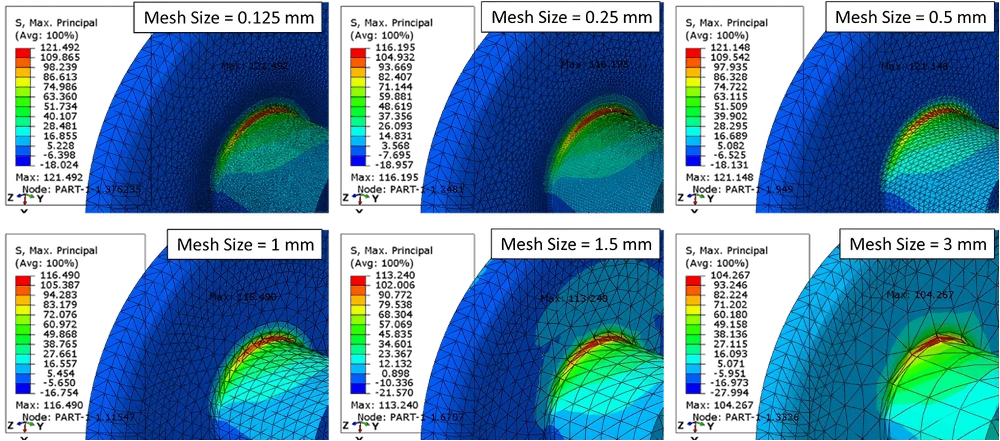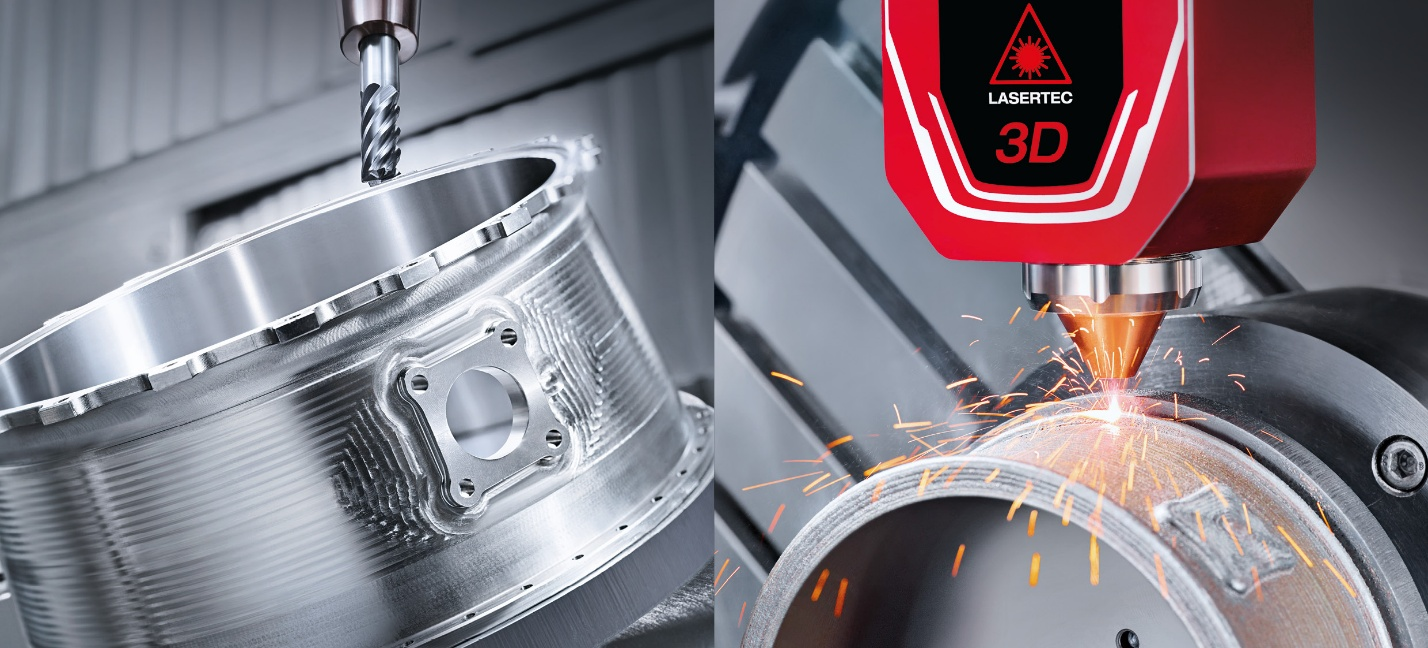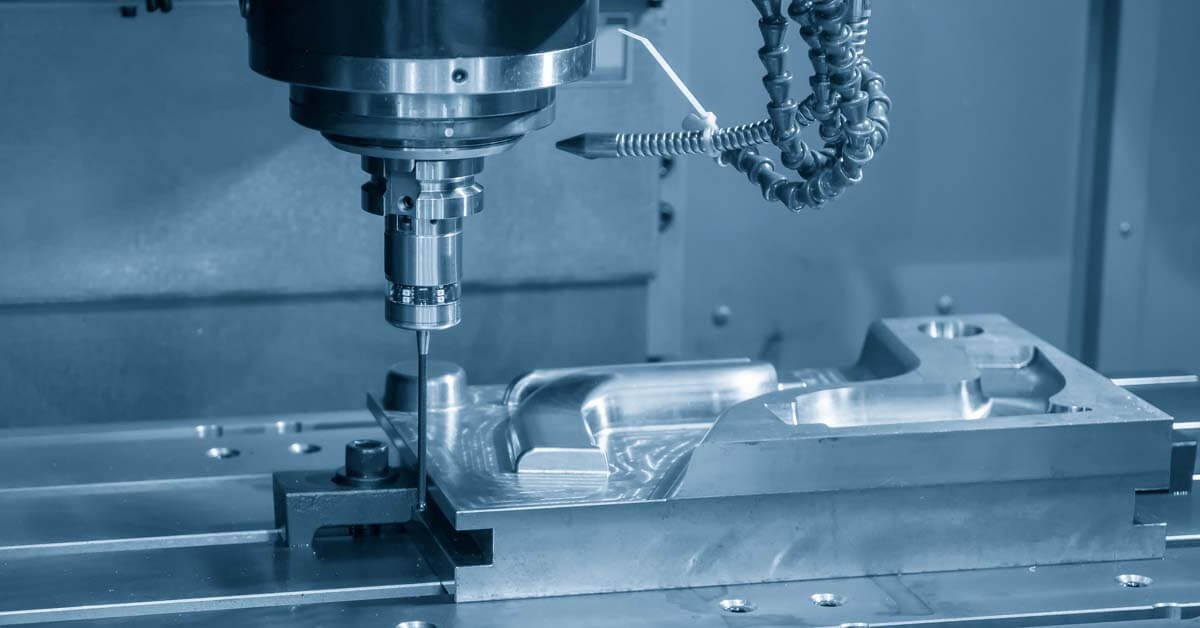Do you want your CNC machine to produce perfect results consistently? There are some concepts of accuracy and repeatability that you should know. This article will define these concepts and explain how to keep your machine in peak condition.
When looking for a CNC machine for your business, it's crucial that you find one that can produce consistent results with high levels of precision. The quality of components, controller type, and power supply stability can affect CNC accuracy and repeatability. Higher-end CNC machines are more accurate and repeatable. Even high-end CNC machines can have accuracy and repeatability issues if not properly maintained.
Choose a reliable manufacturer and strictly adhere to your CNC machine's operating and maintenance instructions to guarantee its peak performance. Consult a technician if you have concerns about your CNC machine's accuracy or repeatability.
Lets’s move to the main topic without further delay:
What Is CNC Machine Accuracy?
The CNC machine's accuracy is defined as its closeness to the intended value. In other words, accuracy is the degree to which the system's reported measurements match up with reality. If there is a negligible difference between the two measurements, we can confidently say their accuracy is high. It's another name for the correlation between two variables.

To better understand, consider the example below. When you visit a shop that offers CNC machining services, they will likely claim about the precision of their CNC machine tools. If the tool's instruments are set up to cut a metal piece that is 50 mm in length, it is implied that the item will be cut precisely. If the measuring device is as precise as the provider claims, the result will be precisely 50 mm.
Many factors affect the quality of CNC-machined parts, including toolpath programming, tool selection, part design, mechanical skills, and clamping tactics. Elements of landing gear in high-performance aircraft and laser surgery robotic arms are two examples of critical-path components that must always work as intended.
What Is CNC Machine Repeatability?
Repeatability is the degree to which the outcome differs when repeated attempts are made to achieve the same goal, such as visiting the same spot, measuring the same quantity, or bonding the same number of wafers in succession under the same conditions. Repetition of failed procedures is a common source of errors.
The following steps can improve repeatability
- Measurement and correction
- The process of tracing and correcting for deviations using a control system. Examples of this error include backlash and changes in screw pitch throughout the flight.
- External factors, like heat, which causes strain relief, differential thermal expansion, and reset, frequently contribute to low repeatability. Therefore, environmental control can play a crucial role in creating an accurate machine or instrument.
Communicating with anyone is much easier when you understand accuracy and repeatability. Additionally, it will make it simple for you to compare all the essential features and specs to your needs, enabling you to decide if you want o not to buy the services.
Types Of Accuracy Of CNC Machine Tools
Several machine features fall under "machine tool accuracy." CNC Machine Tools' precision is different for designers and metrologists. When discussing metrology, accuracy refers to how well a measurement result matches the target value.
In machine tools, there are numerous accuracy forms, and the determination's accuracy is qualitative. The three different categories of accuracy are geometric, working, and production. Every single one of these accurate descriptions has its own supporting evidence.
1. Geometric Accuracy
Geometric accuracy refers to the machine tool's geometric design, from which it is possible to assess the qualities of the functional parts that influence the accuracy of its work. You can learn about the machine's build quality and how it's put together when it's not in use.
These checks are performed on machines in their final, or no-load, machining state. The standard SN ISO 230-1 specifies methods for measuring and evaluating the geometric accuracy of axes. The standard specifies six different types of geometric errors for rotary and linear axes.
Any misalignment or bending (bent) in the machine's rails will show up on the straightness gauge. Squareness is determined by checking the parallelism of two axes that are not actually orthogonal. Planeness measurement ensures that CMM tables, plate fields, machine tools, and surfaces are all flat.
2. Positioning Accuracy
In numerically controlled axes, this value characterizes the accuracy and repeatability of positioning. ISO 230-2/6 provides guidance on how to measure the precision of numerically controlled axes, although the directive VDI/DGQ 3441 is also widely utilized.
Laser interferometers are most frequently used to measure positional precision. Comparing the machine's displayed position to the laser system's measured location provides a measure of linear positioning accuracy and repeatability.
The Laser Tracker is a more sophisticated tool for measuring positioning accuracy since it provides a quick assessment of the x, y, and z variations. If you have a machine that is already completed and running, you can check its geometric precision and positional accuracy simultaneously. Consequently, it is common practice to evaluate them all simultaneously.
3. Interpolation Accuracy
If CNC machines were precise, their circular paths would correspond exactly to those entered into the computer. The radius of the circle will diverge from the programmed circle in practice if there is any error (such as a measurement error, a straightness error, a clearance error, a reverse error, etc.)
We can determine the machine tool's precision by taking precise measurements of the actual circular path and comparing them to the nominal path. The SN ISO 230-4 standard addresses the evaluation and measurement of the accuracy of circular interpolation.
The goal of the tests is to provide a way to figure out how well contour-forming numerically controlled machine tools work. Geometric flaws and the machine's dynamic behavior at feed cause these kinds of mistakes. If machining and interpolation testing use the same diameter and feed, results are apparent on machined items under optimal processing conditions.
4. Volumetric Accuracy
Some advanced and very forward-thinking methods include figuring out how accurate the volume is and then making up for it. These methods minimize tool center point (TCP) deviation in the machine's workspace. The total volumetric deviation of a TCP is equal to the sum of the deviations along each axis.
The error deviation in the working space represents the machine tool's volumetric accuracy. ISO 230-1 defines volumetric accuracy for a three-axis center as the largest difference between the measured position and the desired position along the x, y, and z axis, as well as the largest difference in orientation along the a, b, and c axes for rotations along those axes.
The Laser Tracer is primarily a device for measuring and compensating for volumetric accuracy. Measurements with a laser tracer are based on the idea of sequential multilateration, which means measuring the lengths of the beams and then figuring out where they meet in the workspace. With this method, you must take measurements slowly from different parts of the machine (recommended from at least four Laser Tracer positions). The method is shown as similar to the GPS system.
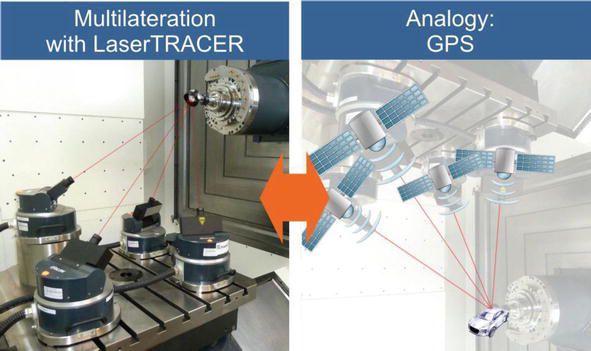
5. Production Accuracy
Production accuracy is how well the process of making something is done, as shown by the workpiece. Geometrical accuracy, positioning accuracy, and working accuracy all play a role in how precisely a product is made. Machine operator error is another possible cause of disturbance (tool not set up right, workpiece not clamped well).
The primary factors that have an impact on the machine tool and the manufacturing process, resulting in dimension variations in the workpiece, are:
- 15 % Production Technology
- 25% Machine Working Accuracy
- 15% Measurement
- 20% of Ambient Conditions
- 5% Machine Parts
- 20% of Machine Operators
Factors Affecting CNC Machine Accuracy and Repeatability
Many factors influence the accuracy and repeatability of CNC machines:
● The Machine’s Construction
It should be able to do the most forceful machining tasks that your application calls for without causing the parts that hold it up to bend too much.
● The Feedback System
An axis's linear scale provides a direct readout of its relocating component's location. They are not as dependent on the accuracy of the axis system components (ballscrews, way systems, and couplers) as rotary encoders.
● Machine Tool Calibration
The pitch error and backlash compensations on a machine are initially calibrated by the machine builders. However, the end users of the machine must repeat these calibrations at predetermined intervals throughout the machine's lifetime. In order to ensure that the machine continues to function accurately.
● Environment
The temperature and humidity of the area where machine tools will be used need to be kept consistent.
Main Cause Of Errors In Machining Accuracy and Repeatability
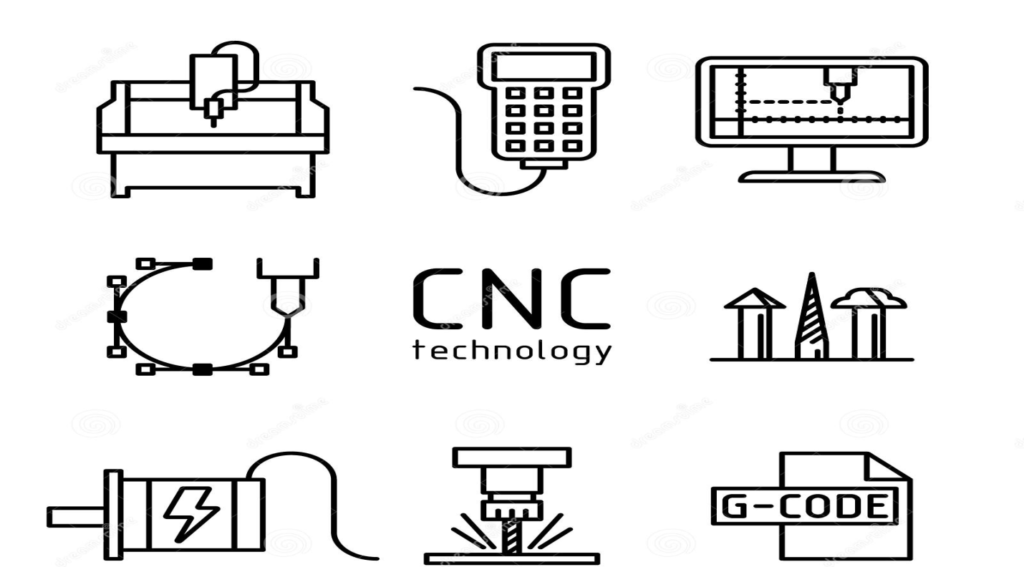
● Spindle Rotation Error
Spindle rotation error is the degree to which the actual axis of rotation deviates from its typical rotation axis at any given time. The coaxiality error of various segments of the main shaft journal, errors in the bearing, misalignment of the bearings, and main shaft deflection are the primary contributors to the radial rotation error of the drive shaft.
● Guide Rail Error
The guide rail serves as a standard for both the movement of the machine tool and the determination of the relative positions of its various parts. Additional contributors to guide rail error include uneven wear and poor installation quality.
● Transmission Chain Error
A transmission error is a difference in position between the starting and finishing transmission elements. The mistakes made during CNC manufacturing and assembly of each link in the transmission chain are the main contributors to transmission errors.
● Geometric Error of the Tool
In any tool's cutting process, wear causes the workpiece's size and shape to change. The geometric accuracy of CNC machine tools is affected by external forces and heat generated during machining. The machine tool's geometric distortion causes geometric errors. According to research, internal and external factors cause CNC machine tool geometric errors. Geometric errors in a machine tool are referred to as "internal factors" when they are caused by the machine's own design.
External factors include environmental geometric errors and CNC thermal deformation. Some examples are when the tool or CNC part expands and changes shape because of heat during the cutting process. Both of these lead to geometric errors that negatively impact CNC machining. All CNC-machined components have excellent precision and machining accuracy.
● Positioning Error
There are two different kinds of mistakes that can happen when a workpiece is being CNC machined on a machine tool. One is the positioning pair error that occurs inaccurately in CNC manufacturing. The second is the amount by which the finished CNC-processed piece deviates from its planned orientation in terms of perpendicularity, symmetry, positioning, etc.
When it comes to the precision of CNC machine tools, positioning is crucial. In an open-loop system, position accuracy is significantly impacted. In a closed-loop servo system, it primarily depends on the precision of the CNC-machined components. The main factor influencing positioning accuracy is the machine tool's feed system.
Relationship Between Accuracy and Repeatability
Even though accuracy is "what the buyer pays for," it is still important to understand the repeatability of the system's individual parts and how they interact with one another.
The graphs that follow show this limiting relationship.

In the picture, the points show how many times someone tried to move toward the starting point.
- Low Repeatability and Low Accuracy: The data points in the first graph are all over the place with respect to the x-axis origin. The accuracy and repeatability are both poor.
- Low Accuracy and High Repeatability: The second graph displays results clustered closely together but away from the graph's origin. Accuracy is poor, but repeatability is excellent. But when a result is this consistent, it is possible to figure out what went wrong and fix it or make up for it.
- High Repeatability and High Accuracy: As a result of this adjusting process, a third-form graph frequently emerges.
Once the results are so close to the true position, the only way to make them more accurate is to make them easier to repeat. So, the lowest level of accuracy is repeatability.
How are CNC Machine Accuracy and Repeatability Measured?
There are many methods for assessing the accuracy and repeatability of a CNC machine, but the most common is the use of a Coordinate Measuring Machine. The machine uses several sensors to take readings from all over the workpiece. After collecting data with the CMM, this information is downloaded and analyzed to determine how precise and reliable the instrument is.
There are other ways to measure the accuracy and repeatability of a CNC machine, but they are not used as often. One way is by using an optical comparator, which displays an image of the workpiece on a screen. The operator then checks the image to see if there are any differences by comparing it to a master template. Laser interferometry is another way to measure small changes in the distance between two objects.
It's crucial to understand that the repeatability and accuracy of a CNC machine are two different things. While repeatability refers to how consistently the machine produces the same cuts, accuracy refers to how close it is to make perfect cuts. Some machines are accurate but not repeatable. The most reliable machines consistently deliver precise results.
Frequently Asked Questions (FAQs)
Is repeatability the same as accuracy?
Accuracy is a stage's closeness to the actual value. The repeatability is its capacity for back-to-back positioning to the same setpoint. It is crucial to recognize the distinction between a positioning system's accuracy and its repeatability.
What Do You Mean by Precision?
This is another crucial term in CNC manufacturing. It also defines a machine's reliability. Precision means that a measurement system can always produce the same result. If you want reliable data for your calculations, ensure the system's repeatability.
What determines the accuracy of the machine?
The accuracy and cost-effectiveness of machining are highly dependent on the machine tools' kinematic structure, energy source, tool materials, and tool type.
How can I improve my CNC accuracy?
- Use of Quality Tools
- Understand the Material Properties
- Upgrade the Machine Tool Promptly
- Improve Cutting Tool
- Watch an Eye on Tool Wear
- Machine Condition
What is backlash in CNC?
CNC backlash is like threading a nut onto a screw. Hold the screw in one hand while using the free hand to turn the nut by applying pressure. "Backlash" results from thread movement.
Final Thoughts
In conclusion, accuracy and repeatability are independent of each other. Accuracy is how close your shot is to the centre of the target. Repeatability is how many times you get it right. If accuracy and repeatability are both OK, you'll get a whole batch of good parts - but not all at the same time.
Also, it is important to understand the factors that affect CNC machine accuracy and repeatability to produce high-quality parts. You can also calculate it by the methods mentioned above.
So, what are you waiting for? Go and check your CNC machine's accuracy and repeatability and generate accurate results every time!




